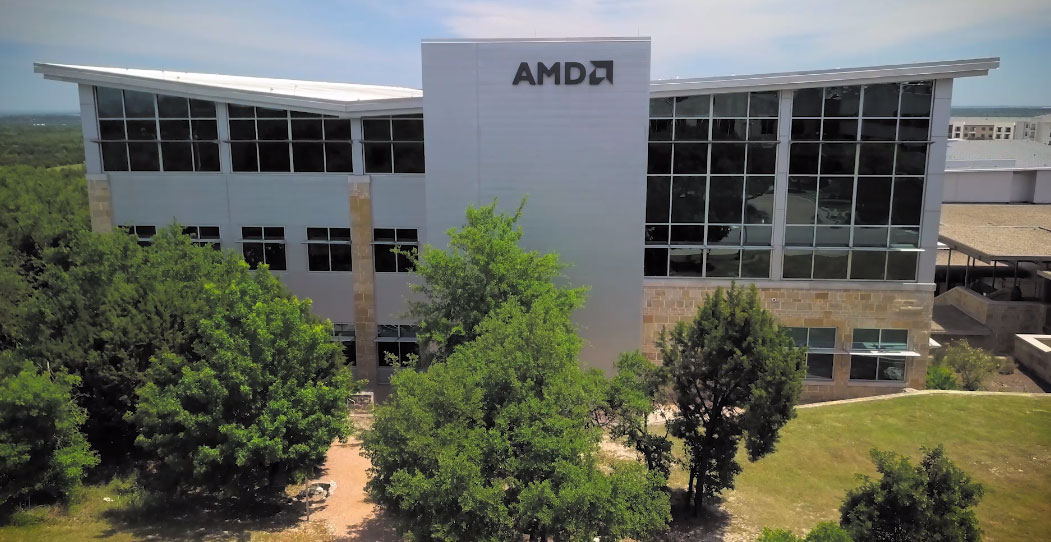AMD refutes report it improperly sold x86 CPU technology to China
An explosive report on AMD's chip licensing deal with China "contains several factual errors," AMD says.

AMD has issued a strongly worded statement in response to a recent report by The Wall Street Journal over a CPU licensing deal with China. The report, titled "How a Big US Chip Maker Gave China the 'Keys to the Kingdom'," claims AMD's deal may have saved the company financially, but also "alarmed US national security officials," who have sought to "rein in China's supercomputing industry."
"The Wall Street Journal story contains several factual errors and omissions and does not portray an accurate picture of the joint ventures that AMD entered into with THATIC in early 2016," AMD's statement reads. "AMD takes strong exception to characterizations in the story that it did not act properly or transparently in creating the joint ventures."
It's a bit complicated, but the report covers the circumstances surrounding AMD's joint ventures with Chinese companies in 2015. Dr. Lisa Su had come aboard the previous year as CEO, when AMD's stock was trading for around $3 per share, versus $30 today.
Specifically, the report points to the joint venture between AMD and Sugon Information Industry Co., a state-backed military supplier and supercomputer developer, for creating a financial "lifeline" to the tune of $293 million in licensing fees, plus royalties on any semiconductors resulting from the joint venture. Not long after, AMD received more cash from China by selling an 85 percent stake of two of its semiconductor factories for $371 million, the report states.
According to the report, AMD's partnership was a "game changer for China," which has struggled to compete with the US in the supercomputing sector because of inferior CPUs.
WSJ also spoke with retired Brig. Gen. Robert Spalding, a former member of the National Security Council, and claims he discussed strategies with other officials and agencies to stop the AMD deal from happening.
"It’s the keys to the kingdom," Spalding said. "Everything today is built on x86."
The biggest gaming news, reviews and hardware deals
Keep up to date with the most important stories and the best deals, as picked by the PC Gamer team.
There is quite a bit to the report, and Wccftech, a site that is widely known for posting rumors and speculation, actually has a thorough (and critical) breakdown of the details. It's worth a read if you have the time and want all of the nitty-gritty details.
AMD, meanwhile, contends everything was by the book, and that it did everything "correctly and transparently" in its interactions with the US government ahead of forming its joint ventures.
"Starting in 2015, AMD diligently and proactively briefed the Department of Defense, the Department of Commerce and multiple other agencies within the US government before entering into the joint ventures. AMD received no objections whatsoever from any agency to the formation of the joint ventures or to the transfer of technology— technology which was of lower performance than other commercially available processors," AMD said.
"In fact, prior to the formation of the joint ventures and the transfer of technology, the Department of Commerce notified AMD that the technology proposed was not restricted or otherwise prohibited from being transferred. Given this clear feedback, AMD moved ahead with the joint ventures," AMD added.
The overall statement is a strong rebuttal. In addition, our friends at Toms Hardware recently spoke with Dr. Su at Computex, who confirmed that AMD is not licensing further chip designs to the China-backed joint venture. So, licensed designs essentially end at first-gen Ryzen and Epyc processors, and do not include designs based on the Zen 2 architecture that powers recently announced third generation Ryzen or Epyc Rome processors.
Paul has been playing PC games and raking his knuckles on computer hardware since the Commodore 64. He does not have any tattoos, but thinks it would be cool to get one that reads LOAD"*",8,1. In his off time, he rides motorcycles and wrestles alligators (only one of those is true).


